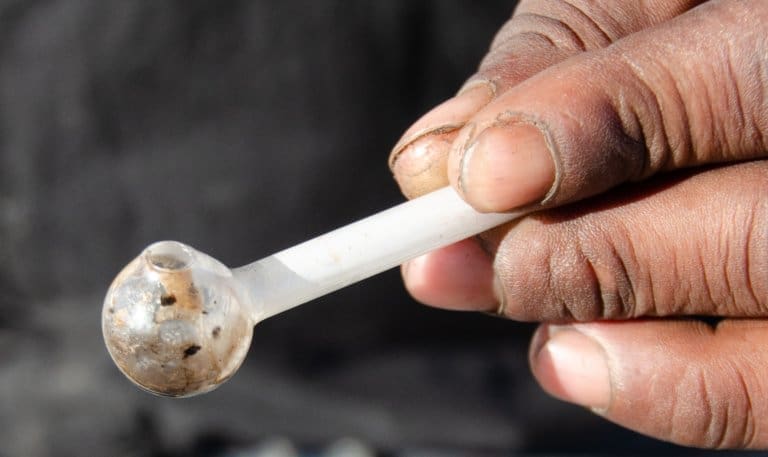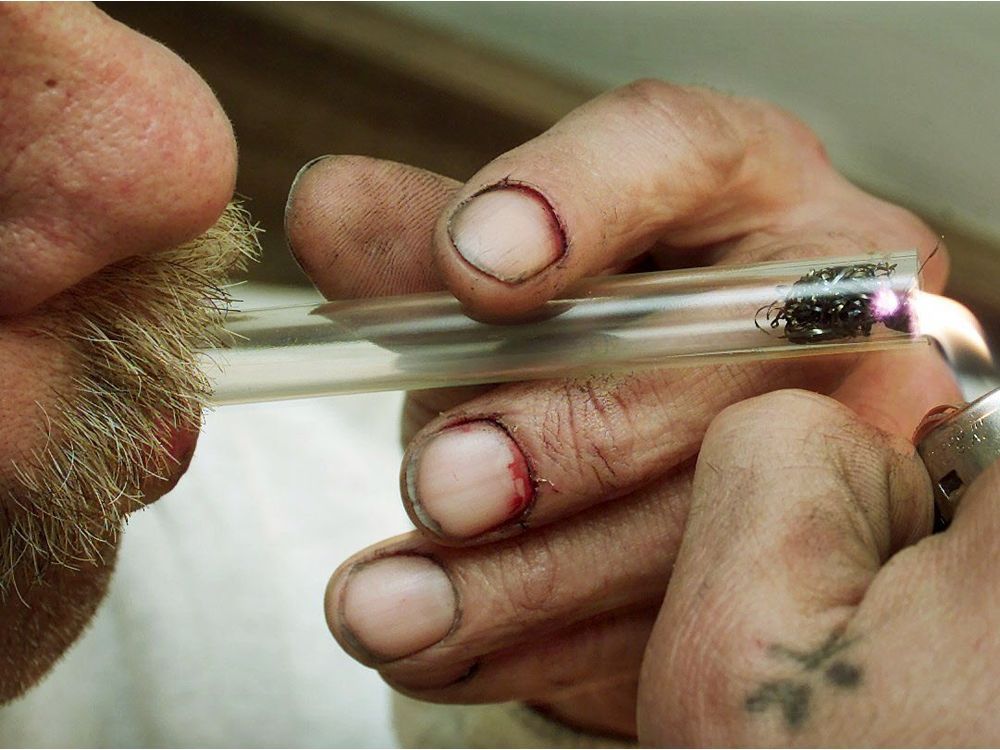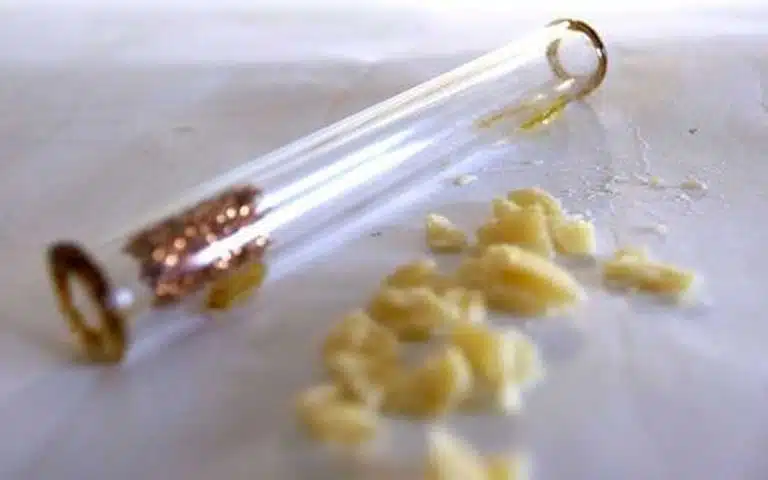
I. Introduction
The consumption of crack cocaine presents a serious hazard to individuals' health, and it carries severe legal consequences. Although there are various methods of substance consumption, the use of a crack pipe is amongst the most common. Despite this, any attempt at the production or dissemination of information about making a crack pipe can potentially encourage harmful behaviour, resulting in further health implications and legal issues.
Why Making a Crack Pipe is Dangerous
Preparation and use of a crack pipe can lead to numerous health hazards – including, but not limited to, risks of severe lung damage, mouth sores, burns, and transmission of diseases such as HIV and hepatitis C. According to the National Institute on Drug Abuse, the most common issues associated with crack use are as follows:
- Potentially fatal respiratory problems
- Increased heart rate resulting in hypertension
- Increased risk of stroke
- Mental health issues such as anxiety, irritability, paranoia, and even hallucinations
Moreover, the risks extend beyond health:
- Creating drug paraphernalia can escalate legal penalties
- Possession of drug paraphernalia is a criminal offense in many jurisdictions
- Sharing drug paraphernalia can contribute to the spread of infectious diseases
Legal and Ethical Considerations
It's crucial to consider the severe legal implications that can follow from the creation or distribution of information related to drug paraphernalia. In most countries, it's illegal to manufacture, distribute, or even possess items used or intended for use in consuming illegal drugs.
Aside from legal issues, there are critical ethical considerations at play as well. Discouraging the manufacture of crack pipes and other drug paraphernalia plays a vital role in discouraging drug use and the propagation of harm related to substance abuse.
Here are a few pertinent points to remember:
- Helping spread information on creating drug paraphernalia contributes to the overall drug problem
- Implementing harm reduction strategies is necessary, such as providing clean needles to prevent the spread of diseases
- Encouraging healthier, safer choices and providing comprehensive drug education can help curb drug use and addiction
In summary, while understanding the issues surrounding drug abuse is essential, it is vital to approach the topic cautiously. Discussions about drug paraphernalia such as crack pipes should always emphasize the health dangers, legal penalties, and ethical considerations associated with their use and creation. And most importantly, the focus should be on prevention, education, and offering solutions for rehabilitation and recovery. [1][2][3][4]

Materials and Tools Needed
When it comes to creating a handmade crack pipe, the importance of using safe and durable materials cannot be overstated. Using sub-par materials can lead to injury or worse. With that in mind, here are some essential materials and tools one might need when constructing a DIY pipe.
-
Pipe Material: Depending on individual preference and easy availability of materials, people use various household items. The critical aspect to consider here is that the material should resist heat and not emit toxic fumes when heated.
-
Chore Boy: Typically, a copper scrubbing material, without soap or detergent, is used as a filter in the pipe.
-
Heat Resistant Tube: A heat-resistant tube, preferably made out of glass, makes for proper ventilation while smoking.
Reminder: It is essential to note that this information is neither a promotion nor endorsement of illicit drug use. Instead, it is for harm reduction, aiming to promote safety and prevent health risks associated with unsafe methods.
Types of Pipes Used for Smoking Crack
There are several DIY methods or types of pipes that have been used for smoking crack, which you can make out of everyday household items. Here are the most commonly used ones:
• Bulb pipes: Made from an emptied light bulb, the filament is removed, and the metal base functions as the opening or mouthpiece.
• Soda Can pipes: An emptied soda can in which holes are punctured on one side, and the substance to be smoked is placed on this side.
• Pen tubes: A dismantled pen can be used as a pipe with one end closed by a substance like chewing gum. The substance is placed at the closed end while the open end serves as the mouthpiece.
Disclaimer: These methods have been mentioned purely for informational purposes. Some, if not all, can lead to dangerous health effects due to the probable release of toxic fumes from heated plastics or metal coatings.
Choosing a Safe and Durable Material
Glass is generally considered the safest material for a pipe as it does not release harmful fumes when heated and is effective at withstanding prodigious amounts of heat. On the other hand, it can be brittle and break, causing potential physical harm.
Metal pipes, while durable, could present a health hazard due to the potential release of harmful fumes when heated.
Wooden pipes could be an alternative. However, they are generally less preferred due to their tendency to catch fire or change the flavor of the smoke.
Plastic is the least preferred due to its high capacity to release toxic fumes when heated.
In summary, options are abundant, but the safety and durability of the materials used should be of utmost consideration. It's important to remember the inherent risks and legal implications associated with drug use. For more information, it's always a good idea to reach out to harm reduction organizations or professionals in your area.

III. Step-by-Step Guide to Making a Crack Pipe
Before discussing how to create a crack pipe, it's important to note that this discussion is not an endorsement or promotion of drug use. The absolute best course of action is to avoid illicit drug use and seek professional help if you're struggling with substance abuse. However, in the interest of harm reduction and public health knowledge, here is a step-by-step process for creating a do-it-yourself crack pipe.
Preparing the Pipe
Materials Needed:
• Small glass tube (e.g., from a pen) or a suitable substitute
• A copper or steel chore, abrasive pad or steel wool as a filter
• A lighter
1. If you're using a pen, remove its inner components to leave an empty, straight, glass tube.
2. Make sure to carefully inspect the tube for any chips or cracks, which can cause injury while inhaling the smoke.
Note: The reuse of pipes can lead to the spread of infectious diseases; it's recommended to use a new pipe for each individual use. Refer to this Harm Reduction Coalition link for more safety measures and facts around substance use.
Assembling the Pipe
1. Take a small piece of the steel chore, abrasive pad, or steel wool. This will act as a conductor to heat the substance and filter out solid particles.
2. Insert the chore into one end of the tube, leaving enough space for the crack cocaine.
3. Heat the bottom of the tube until the crack cocaine vaporizes.
Please Note: It's crucial to remember that the pipe will become very hot and can cause severe burns. It's recommended to use a cloth or other protective material to safely hold the pipe.
Proper Heating and Usage Techniques
1. Apply heat to the bottom of the tube gently and evenly.
2. Crack cocaine should not directly touch the flame to prevent it from being destroyed by direct heat.
3. As the substance vaporizes, inhale the smoke slowly and carefully to prevent lung damage.
Note: Always use caution and be aware of the high risk of dependency and negative health effects associated with crack cocaine use.
While this guide aims to provide a safer means of use, the safest course of action is to seek help for substance abuse problems. Many resources are available, such as the Substance Abuse and Mental Health Services Administration's national helpline (SAMHSA).
Remember, your health and safety should always be your top priority. Please seek professional help if you are struggling with drug addiction. [9][10][11][12][13][14]

IV. Alternative Safer Methods
Despite the well-known hazards of drug use, many people choose to use illicit substances, including crack cocaine. Therefore, harm reduction methods, which seek to minimize the adverse health consequences of drug use, are of paramount importance. Alternative safer methods of using crack cocaine – not promoting usage but aimed at reducing harm – are discussed here.
Safer Ways to Use Crack Cocaine
Using crack cocaine is never devoid of risk, but there are some safer methods to be considered if one decides to continue the habit. One such method is smoking it, which provides a similar high to injecting but carries fewer risks. You will need a small square piece of foil and a straw to inhale the smoke. Heat a small rock in the middle of the V-shaped foil, and when it turns liquid, inhale the vapor through the straw. Always use your own straw—sharing invites a greater risk of infections.
Sourcing your foil: Foil is available free of charge in some needle and syringe services. Fold the foil in half, then open it as a V shape to accommodate the rock. Check this guide to safer crack cocaine smoking on We Are With You for more information and services available.
Reducing Risks and Harm
If you opt for a pipe, you need some steel or brass gauzes (screens) and a thin stick for poking the gauzes into the pipe.
Here are few points to keep in mind:
- Choose Glass: A glass pipe is best for smoking crack as it doesn't get too hot.
- Prepare Your Pipe: Pack about 4 or 5 metal gauzes into one end of the pipe using the stick. Make a dimple in the last gauze to hold the rock.
- Mind the Flame: Gently heat the rock with a lighter until it all melts into the gauze. Rotate the pipe as you heat to ensure you vaporize all the substance. Tilt your head back slightly to avoid any liquid running out the end.
- Avoid Wire Wool: It is advised not to use wire wool in a pipe. Small pieces of hot steel can flake off and damage your mouth, throat, and lungs.
Remember that smoking crack can still damage your lungs, so seek medical advice if your breathing gets painful or difficult. Be cautious of this potential harm while using an alternative safer method.
For further help and resources about substance misuse and related disorders, consider visiting the SAMHSA’s National Helpline.
Remember, these methods do not endorse or promote drug use; they merely aim to reduce harm for those who choose to use. The best advice is to seek professional help to cease drug use entirely. [15][16][17][18]

V. Conclusion
As we wrap up our discussion on gaming laptops in 2023, it's important to take a sharp turn and address a serious and prevalent issue affecting our societies – substance abuse, namely crack cocaine usage. The correlated matters diverge from the context of this blog, yet they are significant to touch upon.
The Dangers of Making and Using Homemade Crack Pipes
It's crucial to emphasize that this article highly discourages and condemns the making and usage of homemade crack pipes. The information has been mentioned only for providing insights into the severity of the drug-abuse issue. According to a research study, homemade crack pipes can expose users to severe health risks, including infectious diseases like HIV and Hepatitis C due to pipe sharing. The physical harm from using poorly made crack pipes can escalate the already dangerous effects of crack cocaine.
Seeking Help and Support for Substance Abuse
If you or someone you know is struggling with substance abuse, it’s important to seek help. Remember, asking for help is not a sign of weakness but an essential step towards recovery. Valid and trusted resources, such as the SAMHSA’s National Helpline, explicitly established to aid individuals and families dealing with mental and/or substance use disorders, are available. This service is confidential, free, and accessible 24/7, throughout the year. It offers treatment advice and provides referrals to local treatment facilities, support groups, and community-based organizations.
Here's a few bullet points on what the SAMHSA’s National Helpline provides:
- Resources and treatment referral for mental and/or substance use disorders;
- Guidance and support in dealing with the aftermath of a relative's suicide attempt;
- Information about family therapy for recovery from mental illness or substance abuse;
- Emotional support for teenagers with parents who abuse alcohol or drugs.
In conclusion, gaming may be a fun and engaging pastime, helping reduce stress, improving strategic thinking, and providing an opportunity to connect with others. But it's also vital to be aware of other societal issues such as substance abuse and take viable steps to help deal with them. Whether it be reaching out to trusted helplines or extending emotional support to those affected, every bit counts towards a more wholesome and healthier society. [19][20][21][22]
